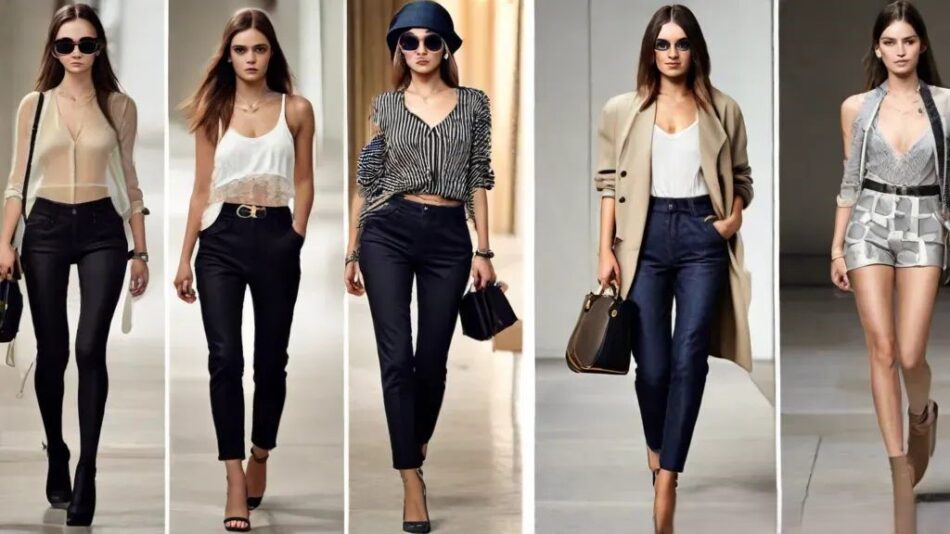Fashion Styles is a dynamic and expressive artistry that rises above societies and time spans. With innumerable styles accessible, understanding the subtleties of each can help you curate a closet that genuinely addresses your uniqueness. This guide investigates different design styles, starting points, and tips on the most proficient method to integrate them into your everyday existence.
The Evolution of Fashion Styles
Fashion styles have developed throughout the long term and have been affected by friendly changes, innovative headways, and social developments. From the rich outlines of the Victorian period to the defiant soul of troublemaker during the 1970s, each style recounts an account of now being the ideal time.
Historical Influences
Victorian Fashion: Described by undergarments, underskirts, and high neck areas, this style mirrors the humility and class of the nineteenth 100 years.
1920s Flapper:
The flapper development upset ladies’ style
Presenting more limited hemlines and a more loosened-up outline
Representing opportunity and freedom
Punk Rock: Arising during the 1970s, punk style embraced a Do-It-Yourself ethos with torn clothing, cowhide coats, and strong extras, testing cultural standards.
Popular Fashion Styles Today
Today, style is more comprehensive and varied than any other recent memory. Here are the absolute most well-known design styles you could experience:
Casual Chic
The easygoing style mixes solace with style, making it ideal for ordinary wear. Think custom-made pants matched with a classy pullover or a fitted shirt. Key components include:
Comfortable Fabrics: Cotton, material, and shirt are extraordinary decisions.
Layering: Use sweatshirts, denim coats, or jackets to add aspect.
Footwear: Shoes, lower-leg boots, or sharp pads can finish the look.
Bohemian (Boho)
The bohemian style is described by its unique and varied nature. It draws motivation from different societies and imaginative developments, frequently including streaming textures, natural tones, and special adornments. To nail this style:
Patterns and Textures: Embrace flower prints, trim, and knit.
Accessories: Layered pieces of jewellery, wide-overflowed caps, and periphery sacks are staples.
Footwear: Shoes or lower-leg boots function admirably with boho outfits.
Minimalist
The moderate style accentuates effortlessness and usefulness. This approach centres around excellent rudiments and unbiased variety ranges, making it simple to blend and match. Key highlights include:
Monochromatic Looks: Adhering to one tone or shifting shades can make a stylish appearance.
Quality Over Quantity: Put resources into immortal pieces instead of pursuing transitory directions.
Clean Lines: Pick coordinated frames for a cleaned influence.
How to Find Your Fashion Style
Recognizing your design style can be an excursion of self-revelation. Here are a few hints to assist you with characterizing your extraordinary style:
Reflect on Your Lifestyle
Consider your daily activities and the conditions you regularly encounter. Your design ought to match your way of life, whether it’s expert, easygoing, or somewhere in between.
Experiment and Explore
Go ahead and out various styles and blends. Visit secondhand stores or attempt rental administrations to analyze without responsibility. This investigation can assist you with finding what impacts you.
Seek Inspiration
Search for motivation in design magazines, online entertainment stages like Instagram and Pinterest, or through style powerhouses. Make a mindset board to imagine your number one styles and components.
Conclusion
Fashion Styles are an interesting method for communicating your personality and inventiveness. Whether you are inclined toward an easygoing style, bohemian, or moderate, the key is to embrace what feels genuine. Keep in mind that design isn’t just about clothing; it’s tied in with recounting your story and exhibiting your singularity. So feel free to investigate, blend, and match to find the style that makes you feel certain and wonderful.
FAQs
What are the main fashion styles?
The principal design styles include:
Casual Chic: A mix of solace and style, frequently highlighting custom-made pants and beautiful tops.
Bohemian (Boho): Portrayed by unique and varied plans, highlighting streaming textures and hearty varieties.
Minimalist: Centers around straightforwardness, excellent fundamentals, and impartial variety ranges.
Classic: Immortal and exquisite pieces that never become unfashionable, like custom-made suits and minimal dark dresses.
Athleisure: Joins athletic wear with ordinary dress for an agreeable yet smart look.
How can I define my fashion style?
To characterize your design style, think about the accompanying advances:
Reflect on Your Lifestyle: Ponder your daily exercises and what garments best suit your daily schedule.
Experiment: Attempt various styles and blends to see what you feel great in.
Seek Inspiration: Look at design magazines, virtual entertainment, and powerhouses to gather thoughts and imagine what impacts you.
Create a Mood Board: Gather pictures, textures, and ranges that rouse you to help explain your style vision.
Can fashion styles change over time?
Indeed, Fashion Styles can change over the long run because of different factors, such as self-improvement, changes in lifestyle, and emergence patterns. It’s normal for your inclinations to develop as you experience new things, so make sure to use various styles throughout your life.
How can I incorporate different fashion styles into my wardrobe?
To integrate different design styles into your closet:
Mix and Match: Join components from different styles to make extraordinary outfits. For instance, match a bohemian top with moderate bottoms.
Layering:Use layering strategies to mix various styles, for example, wearing an easygoing stylish coat over a boho dress.
Accessories: Use accomplices to acquaint various styles without committing to a full outfit. An exemplary purse can lift a relaxed look, while explanation gems can add energy to moderate outfits.
What are some essential wardrobe pieces for a versatile style?
Fundamental closet pieces for a flexible style include:
A tailored blazer: Extraordinary for both expert and relaxed environments.
Classic white shirt: Ageless and can be spruced up or down.
Dark jeans: Appropriate for different events and simple to style.
Little black dress: Ideal for formal occasions and can be adorned for various looks.
Comfortable sneakers: Ideal for relaxed excursions and can be matched with practically any outfit.
These pieces provide a strong groundwork that can be blended and coordinated with various styles to create various looks.


1 thought on “Fashion Styles: A Comprehensive Guide”